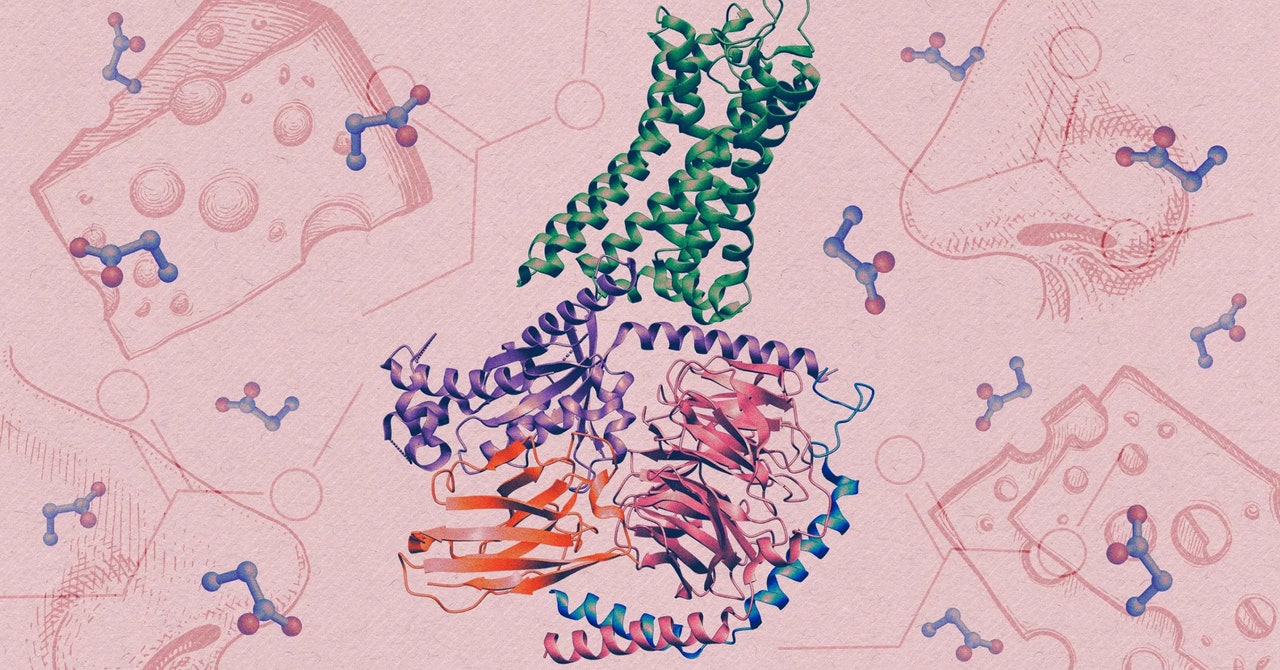
Human olfactory receptors belong to an enormous family of proteins known as G-protein-coupled receptors (GPCRs). Situated within cell membranes, these proteins contribute to a vast array of physiological processes by detecting all kinds of stimuli, from light to hormones.
Over the past two decades, researchers have determined detailed structures for an ever-expanding number of GPCRs—but not for the olfactory receptors among them. To get enough receptors for these studies, researchers must produce them in cultured cells. However, olfactory receptors generally refuse to mature properly when grown outside olfactory neurons, their natural habitat.
To overcome this problem, Matsunami and Claire de March, who was a research associate in Matsunami’s lab, began exploring the possibility of genetically altering olfactory receptors to make them more stable and easier to grow in other cells. They joined forces with Aashish Manglik, a biochemist at the University of California, San Francisco, and Christian Billesbølle, a senior scientist in Manglik’s lab.
Although this effort was progressing, the team decided to give the extraction of a natural receptor one more shot. “It’ll probably fail just like everybody else has,” Manglik recalled thinking. “[But] we should try it anyway.”
They improved their odds by picking an odor receptor, OR51E2, that is also found outside the nose—in the gut, the kidney, the prostate, and other organs. Through Billesbølle’s meticulous efforts, they managed to obtain enough OR51E2 to study. They then exposed the receptor to an odor molecule that they knew it detected: propionate, a short fatty acid produced by fermentation.
To generate detailed images of the receptor and propionate locked together, the interaction that triggers a sensory neuron to fire, they used cryo-electron microscopy, an advanced imaging technique that captures snapshots of proteins that have been rapidly frozen.
The team found that within the structure of the interlocked molecules, the OR51E2 had trapped propionate within a small pocket. When they enlarged the pocket, the receptor lost much of its sensitivity to propionate and to another small molecule that normally activates it. The tweaked receptor preferred larger odor molecules, which confirmed that the size and chemistry of the binding pocket tunes the receptor to detect only a narrow set of molecules.
The structural analysis also uncovered a small, flexible loop atop the receptor, which locks down like a lid over the pocket once an odor molecule binds inside it. The discovery suggests that this highly variable looping piece may contribute to our ability to detect diverse chemistry, according to Manglik.
The Underlying Logic of Scent
And OR51E2 may still have other secrets to share. Although the study focused on the pocket that holds propionate, the receptor may possess other binding sites for other odors, or for chemical signals it might encounter in tissues outside the nose, the researchers say.
Also, the microscopy images revealed only a static structure, but these receptors are in fact dynamic, said Nagarajan Vaidehi, a computational chemist at the Beckman Research Institute of the City of Hope who also worked on the study. Her group used computer simulations to visualize how OR51E2 probably moves when it’s not frozen.

